| Organization Name | Target Activities | Grant Amount |
|---|---|---|
| Japanese Society for Preservation of Birds (JSPB) | Research and conservation activities of endangered birds in Amami Oshima | 2 million yen |
| Royal Society for Protection of Nature | Establishment of ex situ conservation measures for the endangered white‐bellied heron | 2 million yen |
| Islands care | Conservation project to prevent the extinction of Ogasawara greenfinch | 2 million yen |
| Inter‐institutional Panel on Population Management of the Oriental White Stork (IPPM‐OWS) | A project to form an Oriental White Stork conservation network in East Asia | 2 million yen |
| NPO Miura Peninsula Biodiversity Conservation Network | Let’s welcome back the Grey‐faced Buzzard to fallow rice paddies! Yatoda regeneration activity to resume the breeding (also known as the Grey‐faced Buzzard Project) | 2 million yen |
| Japanese Association for Wild Geese Protection | Lesser Snow Geese Restoration Project in East Asia and Raising its Awareness | 2 million yen |
| (Public Corporation) Toyama City Family Park Zoo | Establishment of breeding technologies with a view to returning gray parrots to the wild | 1.9 million yen |
| Japanese Association of Zoos and Aquariums | Development of technology for the creation of Japanese Rock Ptarmigan that can be released into the wild | 1.8 million yen |
| Isla Biodiversity Conservation, Inc. | Citizen science and education for the protection of the Calayan rail | 1.6 million yen |
| Philippine Eagle Foundation | Measures to prevent electrocution of Philippine eagles on Mindanao Island and the conservation and regeneration of biodiversity‐rich primeval forests | 1.5 million yen |
| Yamashina Institute for Ornithology | Genetic analysis for conservation in endangered small birds | 1 million yen |
| Water Birds Study Group Japan | Fact‐finding survey on little tern foraging and resting places | 1 million yen |
| Certified NPO Nishichugoku Sanchi Natural History Society |
Research and conservation of migratory birds in the Yawatakogen Highlands and educational activities | 0.4 million yen |
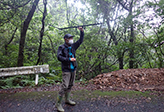
JSPB is committed to conservation and increased public awareness of wild birds and other wildlife. In cooperation with the Amami Ornithologists’ Club, JSPB will carry out research for the conservation of the Amami woodcock and the Amami woodpecker, which are rare birds endemic to Amami Oshima. For the Amami woodcock, birds on Okinawa Island will be outfitted with GPS trackers to survey seasonal movements. For the Amami woodpecker, a population survey and home range survey using GPS will be carried out to estimate the number of individuals.
■ Activity locations: Amami Oshima, Kagoshima Prefecture and the Main Island of Okinawa Prefecture
■ Grant amount: 2 million yen
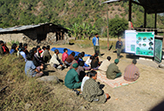
The endangered white-bellied heron lives in the Himalayan freshwater river ecosystem. Only 23 surviving individuals remain in Bhutan, so the survival of the species in the country is at stake. The Royal Society for Protection of Nature aims to reinforce the wild white-bellied heron population by establishing an ex situ base facility to achieve stable breeding and rearing, then release the reared birds into the wild.
■ Activity locations: Changshe, Kingdom of Bhutan
■ Grant amount: 2 million yen
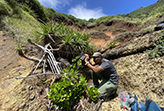
The numbers of Ogasawara greenfinch, which are endemic to the Ogasawara Islands, have decreased sharply in recent years, with the number of breeding individuals thought to number around 200. This project will monitor number of individuals, which is absolutely vital for avoiding extinction, and also investigate their breeding status and the feeding habits that affect breeding success. In 2022, Islands care will work to somehow preserve the next generation of these precious birds with the hope they will be recognized as a species endemic to Japan.
■ Activity locations: Hahajima Islands, Ogasawara
■ Grant amount: 2 million yen
(IPPM‐OWS)
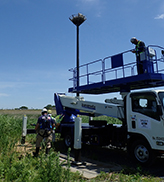
IPPM-OWS will continue in 2022 with the aim of forming a stork conservation network in Asia and establishing a domestic metapopulation that will serve as the basis for the network by supporting improvements to the environment for breeding multiple pairs in municipalities where breeding occurs and by establishing a system for successful breeding in new municipalities. At the same time, IPPM-OWS will also develop plans for breeding, raising and release storks, and raise public awareness about them.
■ Activity locations: Across Japan
■ Grant amount: 2 million yen
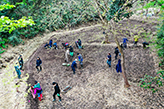
Grey-faced buzzards stopped using the Miura Peninsula in Kanagawa Prefecture as a breeding ground due to a reduction in the number in yato landscapes (called yatoda)* in the area. To recover the population, it is necessary to create new breeding grounds in addition to maintaining current ones. Grey-faced buzzards have been visiting frequently since summer 2021 as the result of ongoing restoration of these traditional semi-natural wetlands in targeted areas. Wetland maintenance will be carried out with the aim of improving the potential for food resources and foraging in the restored environment.
* Yato are valley-shaped landforms created by hill erosion, while yatoda are a type of satoyama (traditional semi-natural landscape) consisting of wetlands and rice paddies.
■ Activity locations: Kanagawa Prefecture
■ Grant amount: 2 million yen
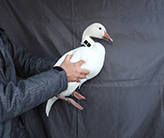
The lesser snow goose population in East Asia has increased to about 2,000 individuals due the efforts of an ongoing project between Japan, Russia and the United States to restore the population. Furthermore, a survey of ancient literature has revealed the birds’ situation during the Edo Period. In FY2021, the Japanese Association for Wild Geese Protection, in collaboration with the Yamashina Institute for Ornithology, fitted the geese with markers such as transmitters at the birds’ largest wintering grounds in Ogata Village, Akita Prefecture, to help elucidate their breeding grounds. In FY2022, the results and knowledge gained will be used to elucidate the birds’ breeding grounds and to carry out public awareness activities.
■ Activity locations: Hokkaido, Tohoku, Kanto, Northeastern Russia
■ Grant amount: 2 million yen

Gray parrots are in high demand as pets but are endangered due to poaching in their native Africa, while Japanese zoos have yet to establish breeding techniques for them. Chubu University is supporting the construction of a conservation framework in the grey parrot’s native habitat as a JICA “Grassroots Technical Cooperation Project.” Under the assumption of returning grey parrots to the wild, Toyama City Family Park Zoo will coordinate with the project by contributing to technical development for matters such as identifying regions of origin, analyzing breeding hormones and undertaking flock breeding.
■ Activity locations: Toyama Prefecture
■ Grant amount: 1.9 million yen
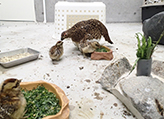
Continuing its work from 2021, the Association aims to establish a breeding method for captive rock ptarmigans to survive in the wild, working on breeding rock ptarmigan chicks raised by mother birds, investigating in further detail the relationships between individuals and chick-raising behavior when living together, and considering appropriate breeding methods. The Association will also study methods to transmit from mother to chicks the intestinal flora necessary for digestion of alpine plants and research the feed needed to maintain the birds.
■ Activity locations: Kanto and Chubu regions
■ Grant amount: 1.8 million yen
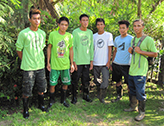
Isla Biodiversity Conservation is a non-profit organization working to protect the small islands of the Philippines. The organization was founded in March 2005 by the members who had recently discovered the Calayan rail. Through research and conservation activities for the Calayan rail, which is specific to Calayan Island, Isla Biodiversity Conservation supports learning about the natural environment of the Philippine’s small islands, protects native species and their habitats, and promotes sustainable living.
■ Activity locations: Calayan Island, Philippines
■ Grant amount: 1.6 million yen
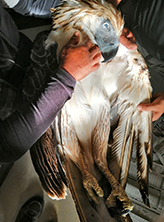
The Philippine eagle is the national bird of the Philippines, but it is also the most endangered bird of prey in the world. The Arakan region of Mindanao is an important breeding ground, but it is not designated as a national reserve and fledging chicks have died from electric shock and poaching. As an emergency protection measure, the Philippine Eagle Foundation will take measures to prevent electric shocks and form a forest patrol corps consisting of local residents to prevent poaching and illegal deforestation.
■ Activity locations: Mindanao Island (southern part of the Philippines)
■ Grant amount: 1.5 million yen
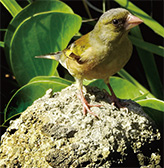
The Yamashina Institute for Ornithology is a private public interest organization that conducts bird surveys, research and conservation activities. The Institute will collect basic data useful for future conservation activities by analyzing the genetic structure within species of endangered birds such as the Ogasawara greenfinch, the Ijima’s leaf warbler, the Izu thrush, the Kamchatka leaf warbler, and the Mandarin duck on Okinawa Island. Part of the above plan has been ongoing since FY2020.
■ Activity locations: Hokkaido, Tokyo, Okinawa Island, etc.
■ Grant amount: 1 million yen
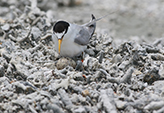
Creation of over-water nesting sites: The breeding conditions for little terns in the Kanto region were catastrophic in 2021. The only successful site was on developed land in Nagareyama City, Chiba Prefecture, but buildings already exist there so it cannot be used as a breeding ground. Instead, a float will be installed in a regulating pond in the same area to attract little terns to make nests. Elucidation of overwintering areas: Since little terns are migratory, geolocators will be used to survey resting points and overwintering points necessary for their protection.
■ Activity locations: Tokyo, Chiba, Ibaraki, and Okinawa
■ Grant amount: 1 million yen
Nishichugoku Sanchi Natural History Society

In FY 2022, Nishichugoku Sanchi Natural History Society began surveying the ruddy kingfisher, which is a symbolic migratory bird in the region by making the most of its know-how developed through surveying and from filming inside the nests of Oriental dollarbirds. In addition, through migratory birds surveys and wild bird observation meetings, the Society will broadly raise awareness of the natural environment and biodiversity while considering questions that will lead to practical actions for regional and environmental issues.
■ Activity locations: Yawatakogen Highlands, Hiroshima Prefecture
■ Grant amount: 0.4 million yen
(6 projects, total amount of grants: 1.2 million Japanese yen)
| Organization Name | Target Activities | Grant Amount |
|---|---|---|
| (NPO) Yasei Dobutsu Kyugo no Kai (Wild animal rescue club) | Publish and distribute picture books as a public awareness activity to reduce the number of wild birds hurt by cats | 0.2 million yen |
| Bupposo no Sato no Kai (Oriental dollarbird club) | Conservation activities and environmental education for the Oriental dollarbird, which is designated as a natural treasure in Nagano Prefecture | 0.2 million yen |
| (NPO) Nipponia Nippon Protection Association | Public awareness activities for returning the crested ibis to the wilds of the Noto Peninsula | 0.2 million yen |
| Kagoshima Prefecture, Izumi City Kakusho Gakuen Crane Club | Survey by school students on the number of cranes and their family structure and distribution | 0.2 million yen |
| Kagoshima Prefecture, Izumi City Takaono Junior High School Crane Club | Survey of the number of cranes coming to Izumi City | 0.2 million yen |
| Izumi City Warabishima Elementary School Eco Club | Crane/bird watching and ecological surveys in and around wetlands | 0.2 million yen |
(2 projects, total amount of grants: 20 million Japanese yen)
| Organization Name | Target Activities | Grant Amount |
|---|---|---|
| Toki no Mizube‐Zukuri Kyogikai (Crested ibis waterside creation council) | Creation of a waterfront for the coexistence of crested ibis and people ‐ Efforts to restore nature around the Tenno River basin ‐ | 10 million yen |
| (Foundation) Ecosystem Conservation Society‐Japan | Stork settlement and wide‐area network promotion project | 10 million yen |